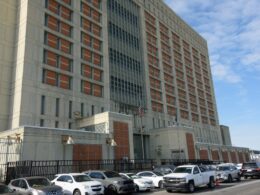For all the talk of public disorder and random crime, New York City’s real crisis lies in its infrastructure. We have too little housing, insufficient energy, 19th century sewers, creaking subways and crumbling roads. Despite billions of dollars invested, much of the city is still vulnerable to one unpredictable superstorm.
Many of the mayoral candidates say they’ll fix these existential vulnerabilities: build a million new homes, remake the Brooklyn-Queens Expressway, complete the restoration of NYCHA so every resident has a safe and affordable place to live, and so on.
The public is appropriately skeptical. New York has earned its reputation as the hardest and most expensive place in the world to build anything. If it takes months to repair a sewer main, how can the government solve the housing crisis before the turn of the millennium?
This is defeatism. I’m convinced that the next mayor can absolutely build out of this crisis and take his or her place in the pantheon alongside Fiorello LaGuardia and Mike Bloomberg.
Unfortunately, this work doesn’t lend itself to one-shot prescriptions like “freeze the rent.” Here are a few ideas for the next mayor that are too wonky for the debate stage:
- Throw your weight behind the Charter Review Commission’s proposed zoning reforms in the general election and make implementing them a priority once you’re elected. Enough said.
- Produce a housing plan that starts on Day One and measures development every step of the way. Every mayor ends the year by declaring a record number of new “units” built or preserved, conflating all kinds of statistics and taking credit for the work of predecessors. Start from zero on Day One and show the public you’re willing to stand by your commitment to solve the housing crisis.
- Expand the city’s capital plan to assess the real cost of capital requirements over the next decade and prioritize. Fixing things as they break costs more in the short and long-term.
- Find ways to work more with the private sector. Public private partnerships rebuilt LaGuardia Airport, developed every bit of the city’s regulated affordable housing, are making subway stations accessible and functional, and are the key to fixing NYCHA. There are hundreds of examples across the continent and throughout the world of private capital successfully developing infrastructure for the public and New York City needs to step up.
- Make the city a better buyer. Government procurement is a disaster. By one account it is responsible more than any other factor for the fact that projects in New York cost more than twice as much as comparable projects elsewhere in the world. Fast tracking critical projects may be appropriate in some cases, but it makes more sense to make permanent changes that will push savings (and better vendors) down through the whole system. Beyond that, New York City’s tech sector has surpassed Austin at this point and can offer ways through some of the most intractable problems.
Sounds boring? Governing is about vision, energy, and relentless focus on detail. Not all the candidates are up to the task.
But the reward would be huge. Housing costs would go down dramatically, which means working families — including the police, firefighters and teachers we now lose to the suburbs — could stay in the five boroughs. Infrastructure activity would bring thousands of good jobs to union and non-union workers. Tax revenues would go up as the city’s economy expands. Capital investment in critical infrastructure would bring down the city’s long-term operating costs, taking pressure off the city budget.
LaGuardia Community College maintains NYCHA’s digital archive of photographs from the last 95 years. It’s a fascinating record of a changing New York, not least because it shows massive construction sites in every corner of the city, public infrastructure as a priority and a symbol of a thriving global capital. The next mayor can take us back in time to move forward.
Rubin is a private equity investor and chairman of the board of the New York City Housing Authority (NYCHA). He worked for Gov. Andrew Cuomo from 2013 through 2017 as executive director of the Office of Storm Recovery, CEO of the Department of Homes and Community Renewal, and director of state operations. He is not affiliated with any campaign for any office and is writing in his capacity as a private citizen.








